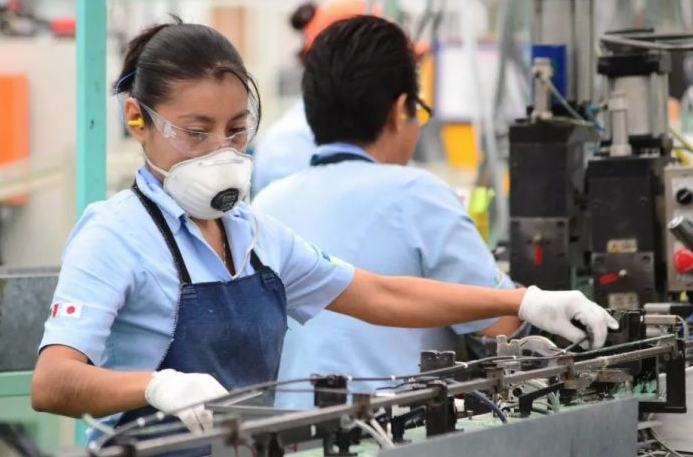Few agendas of a progressive model generate as many ramifications, mutations, and contradictions as those aimed at achieving social and economic gender equality. Although some initiatives are based on relatively simple and straightforward decisions, such as establishing quotas for women in corporate leadership and political candidacies or punishing organizations that violate gender pay isonomy for positions of equal responsibility and performance, these cases have a limited social impact (although highly inspirational) since they affect a minority of the female universe. One might even wonder whether these niche advances do not feed, perversely, a perception of generalized improvement capable of anesthetizing the ambition for achievements in more significant fields of the egalitarian battle.
A study by the consultancy firm Market Analysis together with the global network of pollsters WIN reveals that for just over 45% of the 33,230 people interviewed in 39 countries, women still have fewer opportunities than men in their careers and jobs. Among Latin Americans, this perception is more accentuated, reaching 53%, but if we focus on what women in the region’s largest labor market, Brazil, think, this perception of inequality reaches a phenomenal 75%.
Something similar occurs when we focus on the results of egalitarian struggles. When asked about to what extent gender equality has materialized in their society, 18% of adults in the global survey say it has definitely happened. Comparatively, in Argentina, Brazil, Mexico, Peru, Colombia, and Chile, these percentages are less than half: 9%. If we focus only on what women think, we do not even reach 8%. Can we imagine concrete and large-scale progress towards equality for the majority of women when the feeling of disadvantage is so widespread?
As we were saying, institutional advances such as quotas or sanctions for unequal treatment between genders are good because they establish a principle or rule of the game capable of ordering and inspiring other spheres, but they make us run the risk of not seeing the internal layers of large-scale conditioning of the female population that – such as matryoshkas (also known as Russian dolls) – hide the true content of the origin of inequalities.
One of the bottlenecks of egalitarian struggles that challenges social norms adverse to equity (and therefore harbors an even more nuclear layer of problems) is related to the distribution of responsibilities between mothers and fathers when a new child arrives at home. Not all women with children are in the labor market and – in Latin America – less than half of those who are in the labor market are protected by the laws of formal employment.
These considerations about obstacles to gender equality were potentiated by the pandemic, which not only marginalized women from the labor market in an infinitely greater proportion than men, but also forced them to be unavailable for the professional sphere, as the unpaid responsibilities of care, home maintenance and management of domestic tasks and space in residences suddenly became multi-task centers: schools, offices, restaurants, gyms, game and recreation rooms, and social lounges.
One of the most objective and also one of the most ignored approaches to achieve this valorization occurs through the implementation and effective extension of maternity and paternity leave, the promotion and naturalization of active or responsible parenthood, and a redefinition of the standards of how individuals and organizations should behave towards future mothers.
Recent studies confirm the maintenance of the so-called maternal penalty: almost half of the Brazilian women who have taken maternity leave are unemployed 24 months after giving birth. Far from the European parameters, framed in the welfare state model, stimulated by declining populations and pressure from the social security system, Latin American countries adopt short maternity leaves, mostly of 12 to 14 weeks.
Brazil, Chile, and Colombia lead with about 18 weeks. Gender-equality promoting alternatives such as paternal leave are not on the radar of the general population and these paternal leaves are characterized by their brevity (barely 5 days). Moreover, encouraged to think of a responsibility-sharing format where fathers can take on more time with their children or expand the benefit of more time exclusively to mothers, the Market Analysis data reveal a clear intention gap where fathers strongly support favoring leave for mothers to increase their dedication but are opposed to getting involved themselves in supporting more ambitious paternal leave.
The same study reveals that it is not just a question of opportunism; there is a self-perception of paternal impotence in the creation of children that is much more accentuated among fathers than among mothers, just as there is still a traditionalist vision of the place of women with children in the family and maternal life rather than professional life. Such vision, it must be said, is much more endorsed by men than by women.
These attitudinal contexts are a real challenge to close gender gaps, accentuated by the arrival of motherhood. This is where the joint action of non-governmental organizations, political and state institutions (legislating or supervising leave compliance), and companies (facilitating and expanding maternity and paternity leave) can make a difference, paving the way towards equal opportunities and results.
As in an assemblage of matryoshkas, at the end of the more superficial layers of gender egalitarianism, concerning regulated equalization on wages, formal opportunities, and leadership selection, we find the statuette of how much motherhood is an asset or an obstacle to a society that seeks gender equality.
To the extent that women are forced to experience motherhood in terms that condition it as a penalty to their professional lives, the rest of the edifice of gender equity is built on weak pillars. The last piece of the matryoshka on the road to crystallizing greater equality requires a consensus not only among the organized actors of society but also an effort to bring closer together the still tense worldviews of men and women in our region.
Translated from Spanish by Janaína Ruviaro da Silva













